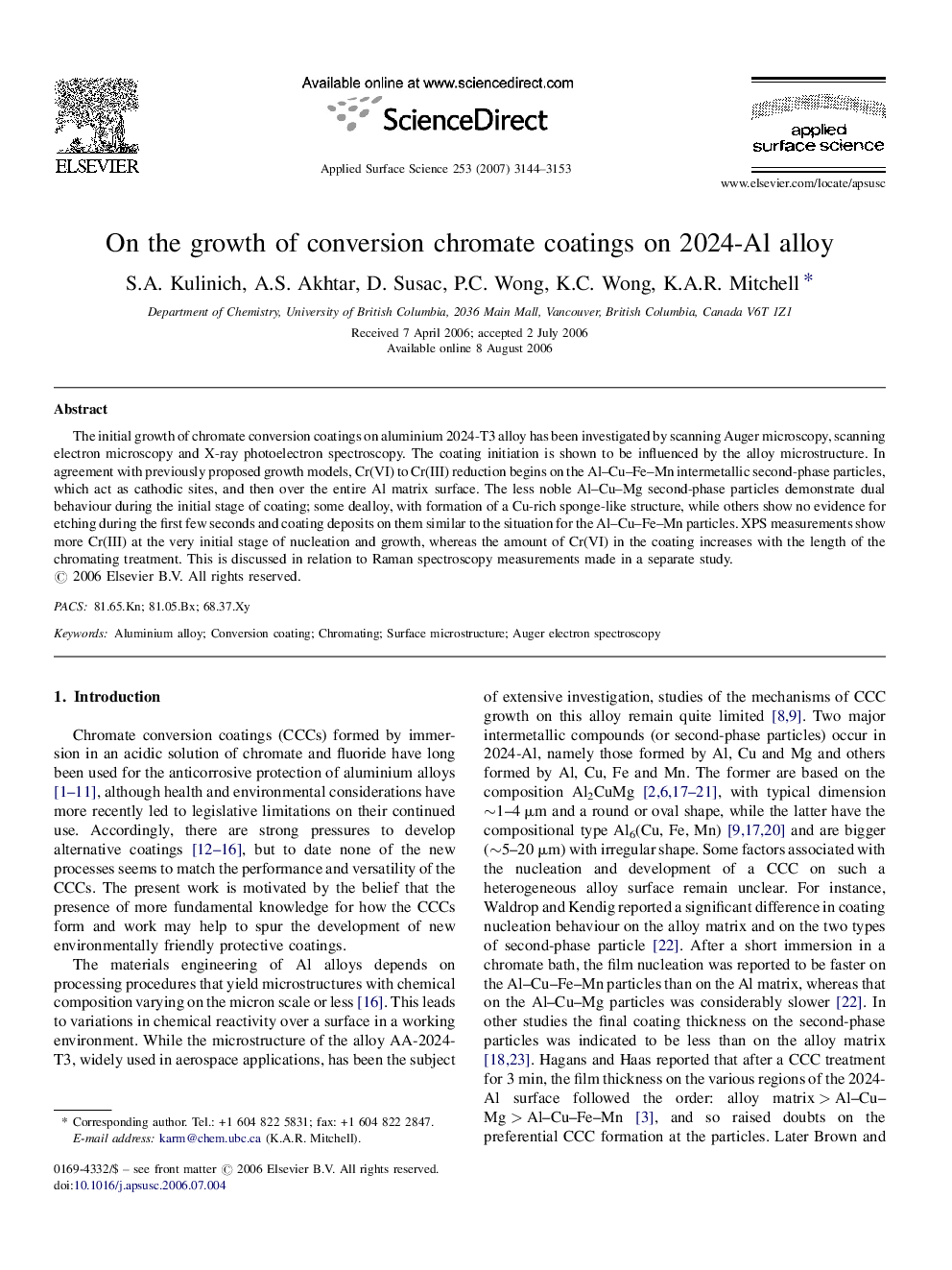| Article ID | Journal | Published Year | Pages | File Type |
|---|---|---|---|---|
| 5365552 | Applied Surface Science | 2007 | 10 Pages |
The initial growth of chromate conversion coatings on aluminium 2024-T3 alloy has been investigated by scanning Auger microscopy, scanning electron microscopy and X-ray photoelectron spectroscopy. The coating initiation is shown to be influenced by the alloy microstructure. In agreement with previously proposed growth models, Cr(VI) to Cr(III) reduction begins on the Al-Cu-Fe-Mn intermetallic second-phase particles, which act as cathodic sites, and then over the entire Al matrix surface. The less noble Al-Cu-Mg second-phase particles demonstrate dual behaviour during the initial stage of coating; some dealloy, with formation of a Cu-rich sponge-like structure, while others show no evidence for etching during the first few seconds and coating deposits on them similar to the situation for the Al-Cu-Fe-Mn particles. XPS measurements show more Cr(III) at the very initial stage of nucleation and growth, whereas the amount of Cr(VI) in the coating increases with the length of the chromating treatment. This is discussed in relation to Raman spectroscopy measurements made in a separate study.
